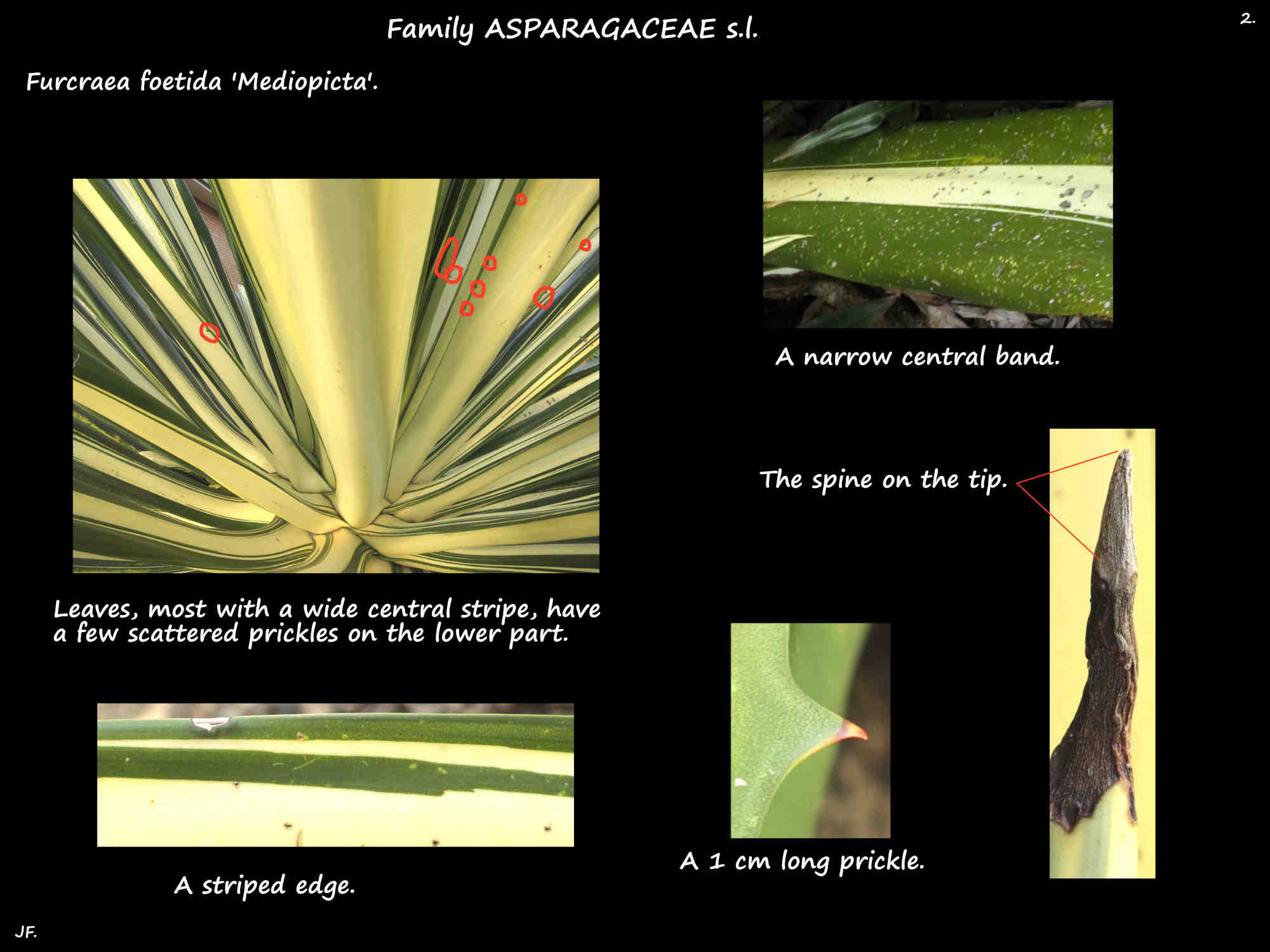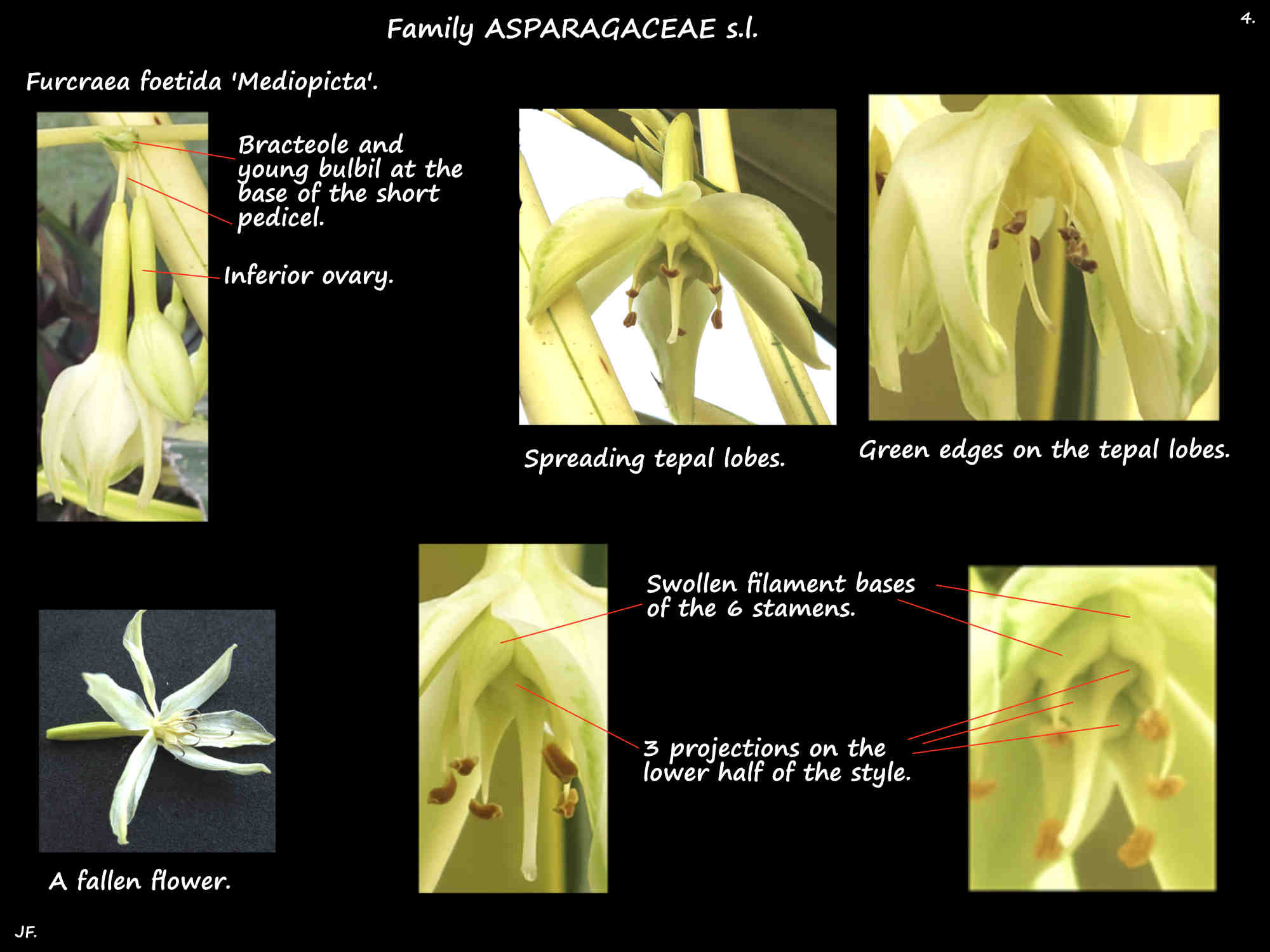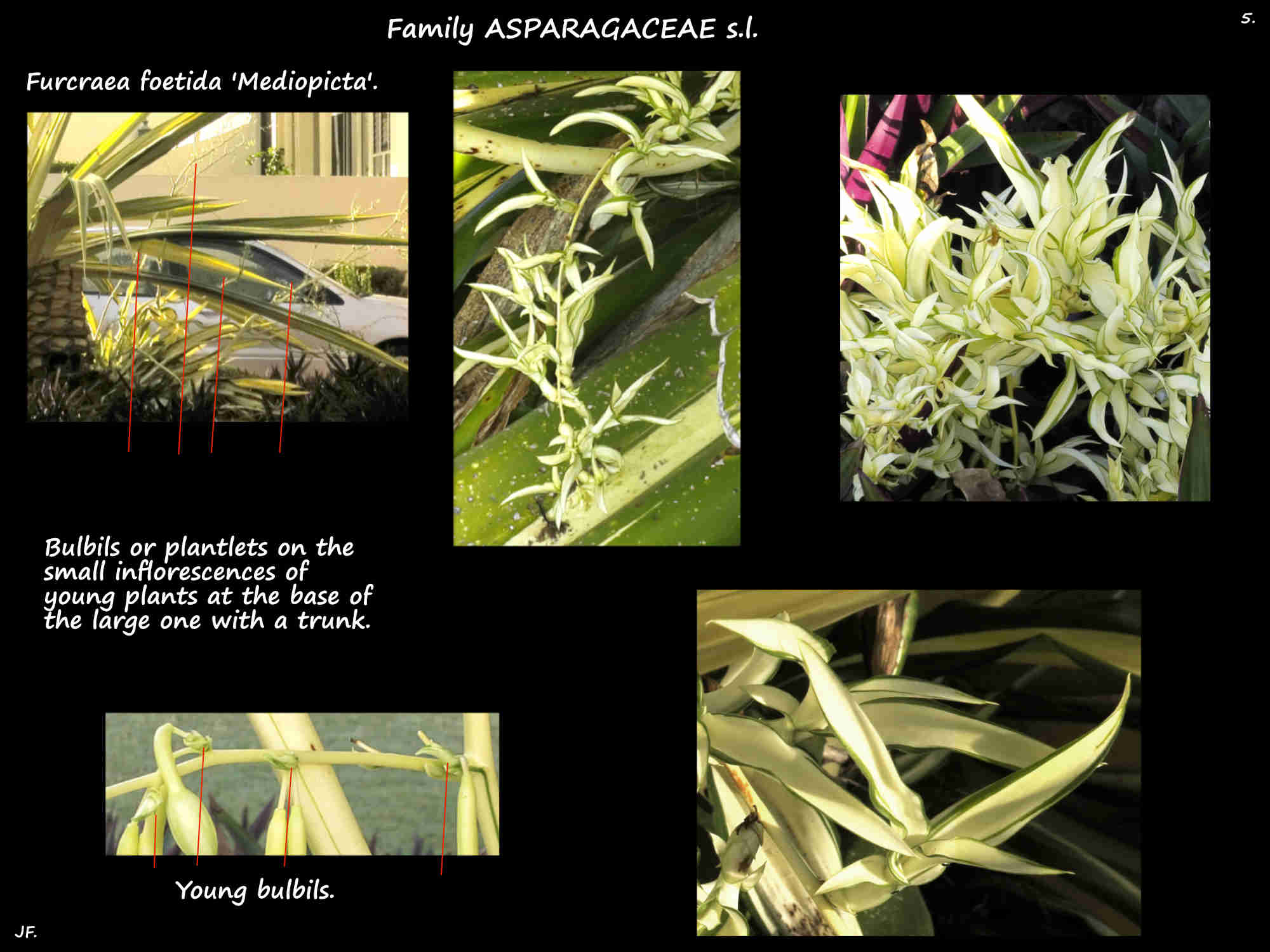Furcraea foetida ‘Mediopicta’.
This invasive variety is more common than the species plant.
They typically have no trunk but when present it can be metres tall.
The alternately arranged leaves are tightly packed in a rosette.
Up to 3 m long the erect to semi-erect leaves can be linear to lanceolate.
Most are rigid due to a high fibre content but some are bent in the middle.
Some leaves have a smooth edge while others have some prickles up to 1 cm long towards the base.
The tip is a blunt point.
They are green with a pale yellow or cream band down the centre.
The width of the band varies with some leaves being almost all yellow while others only have a narrow stripe.
The inflorescences can be up to 13 m high but are less dense than the species plants.
They have fewer side branches and these are racemes (unbranched with flowers opening from the base upwards).
There is a bract at the base of each side branch.
The drooping flowers, on a short pedicel are in pairs or clusters of up to five.
There is a small bracteole at the base of the pedicels.
The 6 tepals are white with some green on both surfaces.
The tepals are joined at the base and the lobes flare out.
The 6 stamens are shorter than the tepal lobes.
The lower half of the filaments is enlarged.
The inferior ovary has 3 locules each with 2 rows of ovules.
The lower half of the style has 3 flattish vertical projections with a rounded edge.
The small stigma has 3 lobes.
The loculicidal capsules have flat black seeds.
Plants reproduce by bulbils or plantlets formed in the inflorescence after flowering.
They develop in the axils of the bracteoles and fall off in large numbers with each being able to grow into
a new plant if it falls on a suitable surface.
J.F






